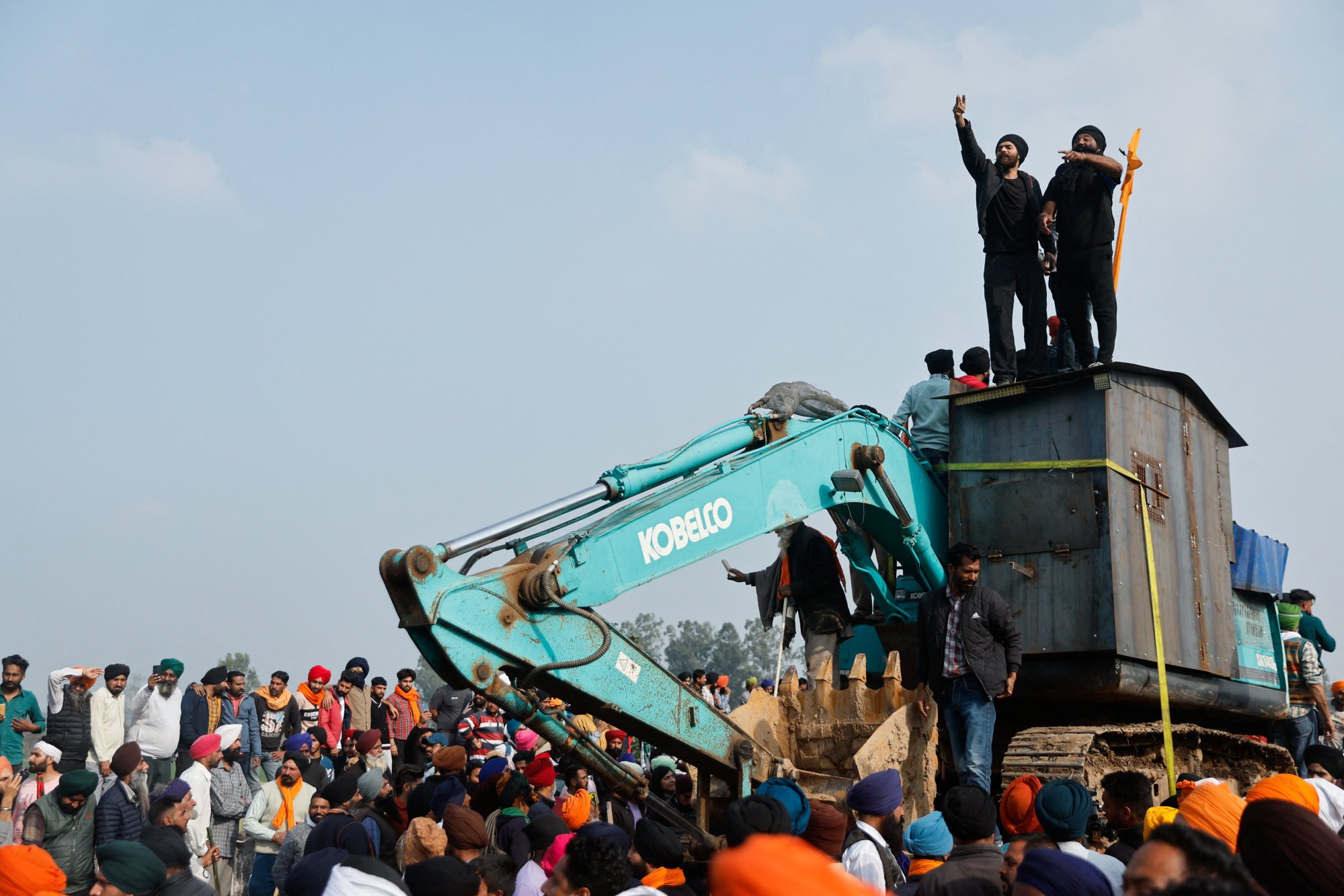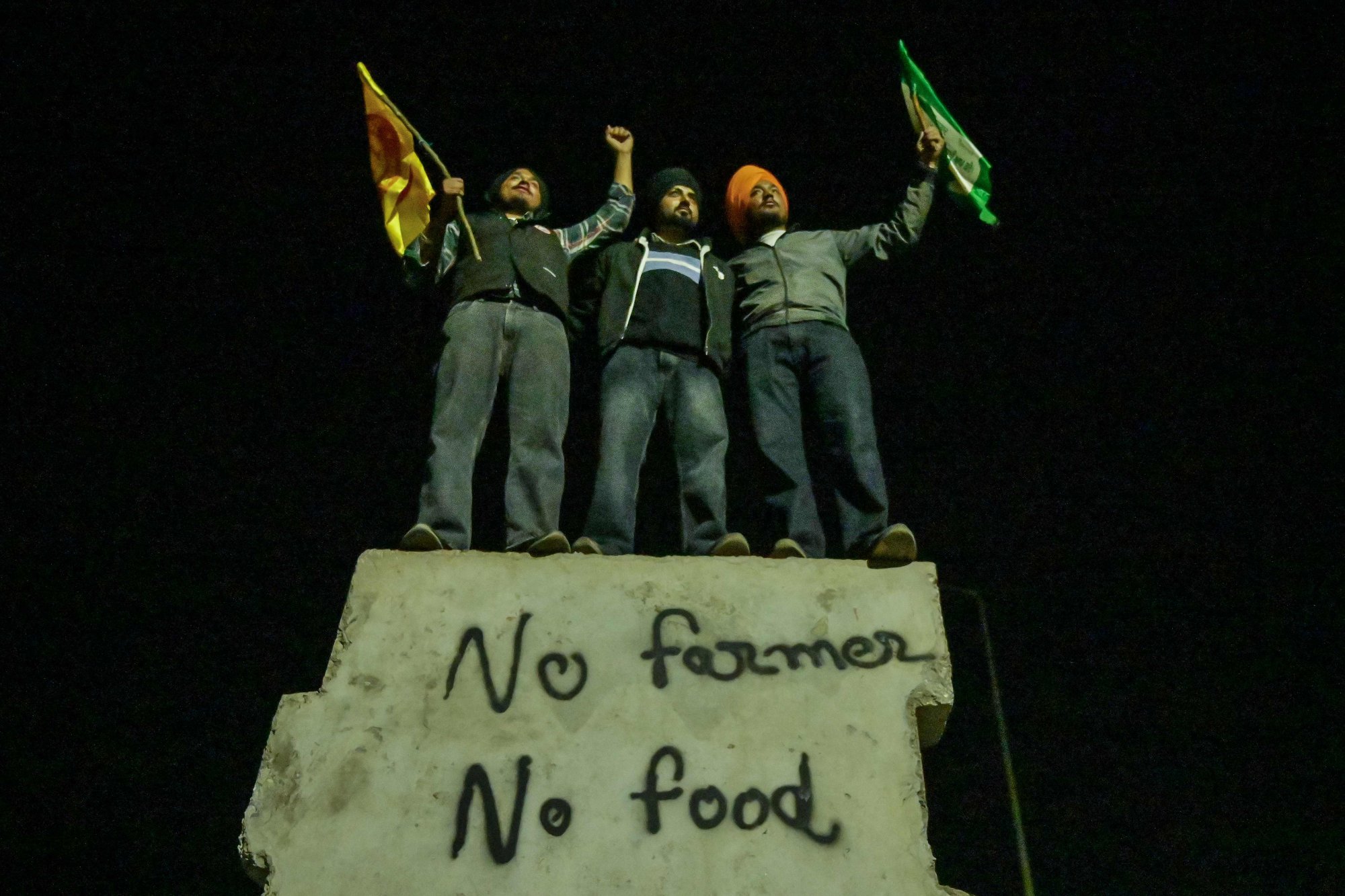
India’s farmers double down in ‘fight for next generation’ even as police allegedly fire pellet guns on protesters
- Hospitals have treated at least 100 victims of pellet wounds since the protest began, and rights groups have urged the Supreme Court to intervene
- But Haryana police have denied the use of pellet guns against the farmers, insisting only tear gas, water cannons and rubber bullets were used
“This is the first time we are experiencing pellets being fired at us. So, I had no idea what had hit me,” Ghrama, who took seven hits, said while on a makeshift bed next to his tractor-trolley with friends.
Thousands of angry farmers last Tuesday began the “Delhi Chalo” protest, marching on the capital to hold the Indian government accountable for unfulfilled promises, including a law to guarantee minimum support prices (MSP) for 23 crops.

But the march stalled at the Punjab-Haryana border, where a heavy contingent of police used tear gas, rubber bullets and what protesters said were pellet guns.
Haryana’s director general of police Shatrujeet Kapur has denied the use of pellet guns against farmers, saying police had followed procedure and “only used tear gas, water cannons and lastly rubber bullets”.
Ghrama remained adamant on the protest despite his injury. “This is a fight for our next generation. I don’t mind sacrificing my life for the welfare of my child. We will break all barriers and march all the way to Delhi,” the father of one said.
Human rights groups from Punjab have written to the Supreme Court’s chief justice, urging India’s top court to stop the use of pellet guns against farmers.
Balwinder Singh Chabhal, chairman of rights group Khalra Mission Organisation, said it was inhumane for the police to use pellet guns against peaceful protesters.
“There is no justification for using such lethal weapons against farmers, many of whom are elderly. That’s why we have written to the chief justice to ban the pellet gun,” Chabhal said.
There are between 90 million to 150 million farmers in India, according to a report by the National Statistical Office for 2018-2019.

On Monday, the fourth round of talks with the central government failed. The Kisan Mazdoor Morcha and the Sanyukt Kisan Morcha – two labour groups representing some 200 farmers – will continue the march on Wednesday towards the capital.
Davinder Singh Bhangu, 22, a farmer from Shekhupuria in Patiala, was at the protest site with his three friends when he was hit in his left eye by what he claimed were pellets, resulting in vision loss.
Bhangu is currently in the ophthalmology ward at a Chandigarh hospital, his friends said, and the hospital has restricted his media access. He also has a blood clot in his eye and will require another operation, but it is “very likely that he can retain his eyesight”, his doctor Suresh Kumar said.
“At least three farmers have lost their eyes,” Punjab Health Minister Dr Balbir Singh said last Friday to local paper The Indian Express.
‘Message of brotherhood’
All injured farmers that This Week in Asia spoke to were also part of the 2020 protest that lasted for nearly a year.
The government did not fulfil its promises, and farmers this time are determined to protest until their demands are met.
The farmers are an influential voting bloc and particularly important to Modi’s base – especially in northern Haryana and several other states with a substantial farming population that are ruled by his BJP.

The government protects agricultural producers against sharp falls in farm prices by setting a minimum purchase price for certain essential crops, a system that was introduced in the 1960s to help shore up food reserves and prevent shortages. The system can apply up to 23 crops, but the government usually offers the minimum price only for rice and wheat.
Protesters with tractors, carrying entire households, are parked on both sides of the road at the Shambhu border and are planning for a long stay. Muslim farmers are also taking part in the protest.
Muslim farmer Liyaqat Ali, 56, travelled with his younger brother and 30 other farmers from their village in Haryana’s Yamuna Nagar to join the protest.
“We stand united for this cause. Our [Muslims’] participation in the protest is a message of brotherhood to all, against the prevailing hatred in the country,” Ali said.

At AP Jain Civil Hospital in Rajpora, 15 miles (24km) from the protest site, Dr Randeep Singh said his staff had treated some 150 injured protesters since last Tuesday.
“Around 100 of them had pellet injuries, mostly in the back,” he said.
Pellet guns were commonly used in Indian-administered Kashmir to control the anti-India protests. According to Amnesty International, pellet guns have caused the deaths of 14 Kashmiris and injured 6,000, with nearly 800 suffering eye injuries, since 2010.
A cartridge of a pellet gun contains several hundred pellets made of lead. When fired, the cartridge disperses these pellets – similar to ball bearings – over several hundred metres depending on the type of gun.
India’s home affairs ministry in 2017 said it had explored other non-lethal ways to disperse crowds. But “if these [non-lethal] measures prove to be ineffective in dispersing rioters, the use of pellet guns may be resorted to,” it concluded.
With additional reporting by Associated Press


